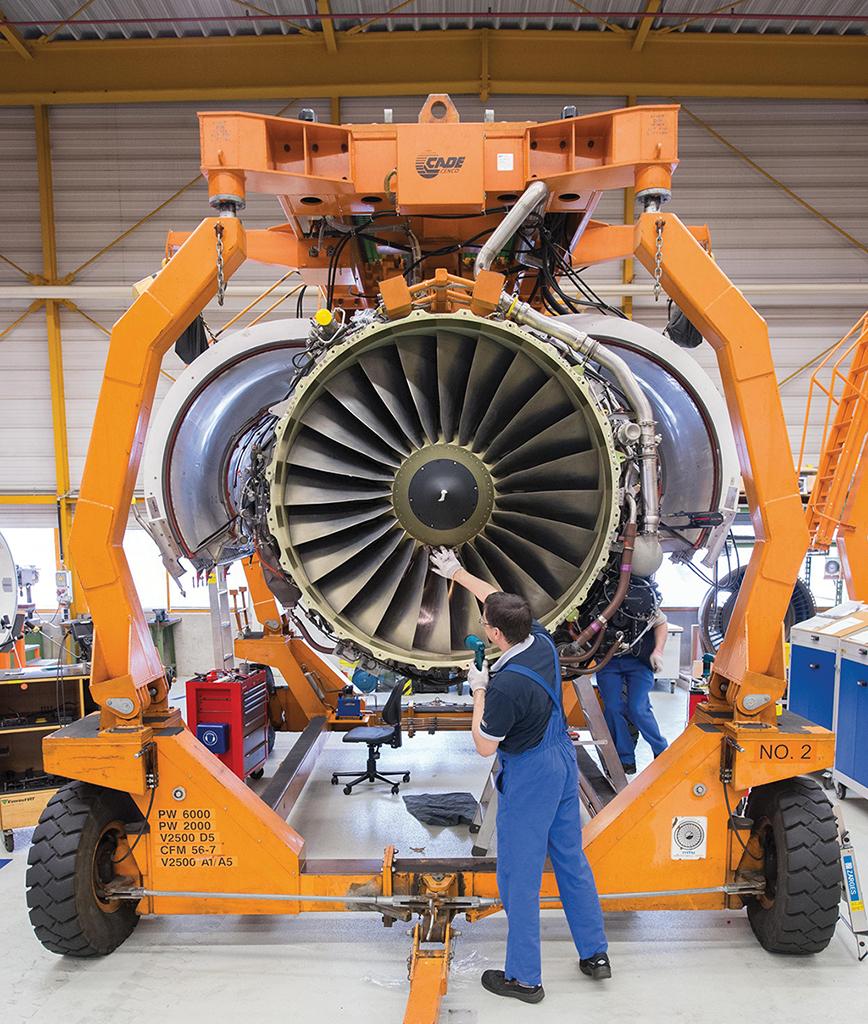Is The Rising Parts Demand A Blessing For Suppliers? | 零部件的需求上升是供应商的福音吗?

随着航空公司飞行活动的增加,以及新飞机的生产率趋于稳定,商用航空供应链中的零部件生产数量正在增长,此前制造商因生产率下调而积累的零部件过剩库存也正在消耗当中。
Commercial aviation supply-chain parts volume is growing as airline activity picks up and new-aircraft production rates stabilize, eating up excess inventory that built up as manufacturers adjusted rates downward.
对于供应商来说,这首先是个好消息,但更多的飞行活动也在短期内带来了一些担忧。其中最主要的问题是需求激增造成的生产率瓶颈,例如零件需求从一年前的近乎为零,到近来有人预测将达到历史年度最高标准。许多供应商还必须考虑替代来源(例如二手零件和材料等)来满足运营商需求,以及降低对产品生产的要求。
For suppliers, this is mostly good news. But more activity brings near-term concerns as well. Chief among them are bottlenecks created by a jump in demand, from nearly zero a year ago to what some are projecting will soon be historical annual norms in the high single digits. Many suppliers also must factor in the timing and scope that alternative sources such as used and surplus material will play in meeting operators’ needs—and reducing demand for their products.
大多数航空公司去年停止了飞机维护方面的支出,因为他们的机队闲置很多,并在静待新冠疫情后的市场情况。一些公司例如 EasyJet等,将维护周期提前,以确保他们在市场好转时可以快速做好准备。但在大多数情况下,由于航空公司需要节省现金、机队缺乏利用率,以及经济低迷后期机队构成的不确定性等原因,这都意味着 飞机MRO 支出将变得像大多数跨国旅行一样——除非它是必不可少的,否则它不会发生。
Most airlines stopped spending on maintenance last year as they idled huge percentages of their fleets and waited out the COVID-19 pandemic’s ramifications. Some, such as EasyJet, pulled maintenance forward to ensure they would be ready when business turned around. But for the most part, the need to conserve cash, a lack of utilization and uncertainty on post-downturn fleet composition meant that MRO spending became like most intercountry travel—unless it was essential, it was not happening.
对许多零部件供应商而言,当波音和空客宣布计划降低多数机型的生产率以匹配较低的近期需求时,对他们的第二次打击来了。生产率的降低导致一些供应商停止零件的供应,因为制造商减慢了生产速度,并消耗了多余的库存来支持产品过去的高价格。
For many parts suppliers, a second blow came when Airbus and Boeing announced plans to cut new-aircraft production rates on most major programs to align with customers’ quickly changing delivery needs that matched lower near-term demand. This led some suppliers to halt parts shipping as manufacturers slowed production and used up suddenly excess inventory delivered to support the previous higher rates.

使供需平衡进一步复杂化的是,由于航空公司简化其机队,所使用的二手零件持续地存在着不确定性。虽然空客 A340 和 A380 、以及较旧的波音 747 等一些四发大型飞机不会在疫情后得到重新使用,但市场复苏的速度和货运机型转换需求等因素将影响包括窄体机和宽体机在内许多机型的退役计划。
Further complicating the supply/demand balance is continued uncertainty around used serviceable material (USM) and surplus parts created as airlines simplify their fleets. While some aircraft types, such as the Airbus A340s and A380s and older Boeing 747s, will not see a post-pandemic renaissance, the recovery’s pace and factors such as cargo-conversion demand will affect retirement plans for many narrowbodies and twin-aisles.
由于目前还无法对未来几年的客运和货运市场进行预测,因此航空公司和租赁公司必须等待市场的复苏。
Determining how many aircraft will be needed to move people and packages over the next few years requires forecasting abilities that nobody has, so operators and lessors must wait.
许多业内人士都认为,机队的退役会增加,与之有关的飞机拆解市场会随之增加。只是这些情况发生的时间和现役/退役机队的比例组合是不确定的。
Many in the industry agree that retirements will climb and part-outs will follow. Less certain is the timing and asset mix.
据《Aviation Week Network - 航空周刊》预计,到 2024 年,认证座位在19座以上的商用飞机平均每年将退役约 780 架——比 2020 年的数字增加 10%。
Aviation Week projects an average of about 780 retirements of commercial aircraft certified to carry at least 19 seats through 2024—a 10% bump over 2020’s figure.
航空周刊情报网 (AWIN) 的“商业航空机队发现数据库”显示,在4 月份有 5600 多架飞机既没有执行定期航班但也没有被停飞,这些飞机占现役机队的 20% 以上。
More than 5,600 aircraft were neither flying regularly nor stored in April, the Aviation Week Intelligence Network’s Commercial Aviation Fleet Discovery database shows, representing more than 20% of the active fleet.
这些飞机中有多少将在未来重返市场将对未来几年的供应链产生重大影响。
How many of them return to line-flying will have a significant influence on the supply chain in the coming years.
二手零件的不确定性、更广泛范围内的物流挑战(如空运能力受限以及航空公司希望降低成本)等情况,实际上本来应该为PMA件的生产企业创造机会
USM uncertainty, broader logistical challenges such as constrained airfreight capacity and airlines’ desire to keep costs down should create opportunity for another supplier source—parts manufacturer approval (PMA) specialists that provide alternatives to OEM-made material.
而航空公司破产,以及减少或取消下属机队的决定则创造了另一个零件供应来源——过剩零件池。例如,AvAir公司4月份宣布从伊比利亚(Iberia)维护和工程公司购买了150万件耗材和30000个周转货盘。
Airline bankruptcies, as well as decisions that reduce or eliminate subfleets, create still another parts-supply source—surplus parts pools. Examples include AvAir’s April announcement that it bought 1.5 million consumables and 30,000 rotables from Iberia Maintenance and Engineering.
波音全球服务部门商业零部件副总裁Giovanni Spitale表示,总体上看,此类交易“将暂时使供需失衡,而且将对所有其他供需流产生影响”。
The aggregate effect of such deals “will temporarily imbalance supply and demand, which will have an impact on all of the other supply and demand streams,” says Boeing Global Services’ vice president of commercial parts, Giovanni Spitale.
加入航空周刊情报网(AWIN)会员,访问公司、项目、机队和联系人数据库,获取权威解析与市场情报并找到新的业务机会。点击击此预约您的产品演示。
